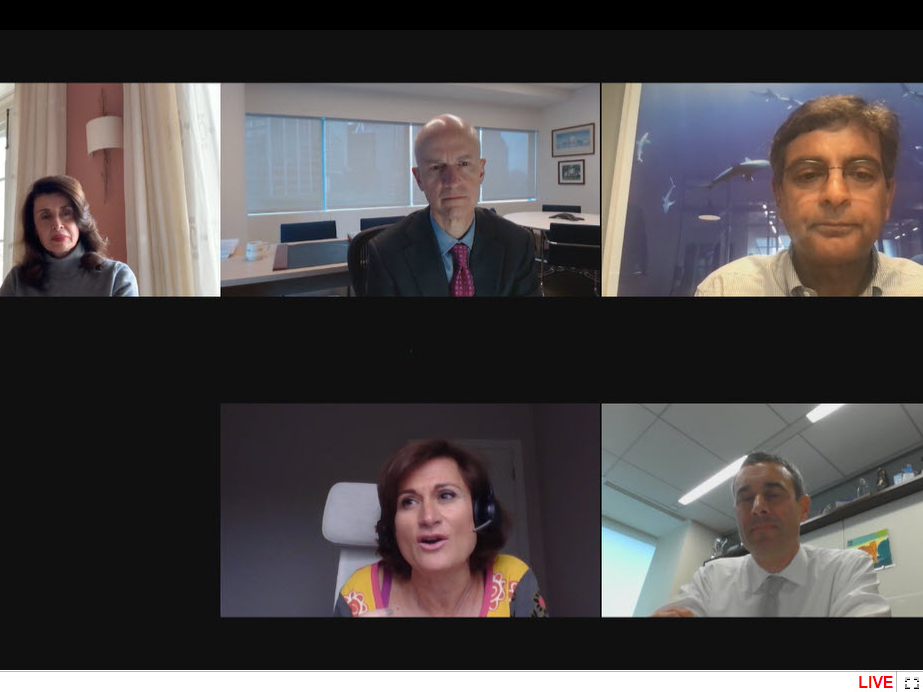CBRE’s Tighe, Panel Offer Predictions During DLA Piper Summit
A group of well-seasoned real estate executives examined investment opportunities, office tenant preferences and what will attract employees back into the workplace.
As a recovering office market draws more investors, you can expect some things to change and others to remain the same, according to predictions from a group of well-seasoned real estate executives during DLA Piper’s 2021 Global Real Estate Summit. Moderated by Mary Ann Tighe, CEO of CBRE’s New York tri-state region, the panel covered a wide range of topics relating to real estate investors, tenants and where talent will be located.
READ ALSO: Gray Lists Opportunities, Strategies During DLA Piper Summit
Pandemic response is driving a number of changes, according to Nathalie Palladitcheff, president of Ivanhoe Cambridge. She predicted a much more domestic strategy as geopolitics plays a more active role in real estate investment, largely based on individual countries’ approach to COVID-19. At an even more micro level, city response will have an impact on preferences. All that said, real estate investors have an opportunity now to be more creative and innovative, she said, to move faster and make bets. And above all, to set the stage for the next generation of the real estate industry. “Be a leader,” she advised, but also noted, “Be humble about what you don’t know yet.”
Environmental efforts are becoming increasingly important, with opportunities only likely to grow as climate change worsens, noted Owen Thomas, CEO of Boston Properties. However, he cautioned, not all customers make it a priority, varying by city and field, although employees are influencing their companies to take a greater interest in environmental improvements. And capital providers are showing increasing interest, with a growing number of exchange traded funds based on ESG scores rather than market capitalization rates.
Flexibility will be critical to meeting tenants’ new needs, as they strive to predict space usage in an unpredictable market. “Flex space is going to become essential,” Tighe affirmed, while Sandeep Mathrani termed it “the disruptor of the office space.” Mathrani became CEO of WeWork last year, following a long history in retail real estate, most recently as CEO of Brookfield Properties Retail Group and vice chairman of Brookfield Properties. Terming flex space the “first leading indicator for long-term space,” he cautioned that those in 15,000 to 100,000 square feet of space will prefer two-year commitments.
Corporate space users will need to pay greater attention than ever to the cost of housing, Palladitcheff cautioned, as talent will choose their jobs based on housing affordability in the locale. Mathrani, however, believes talent will continue to be attracted to the gateway cities.
Luring employees back to their offices will require incentives that outweigh the burden of the commute, Palladitcheff observed. The speakers generally agreed that amenities will take center stage in the effort, especially food options and an emphasis on the comfort of getting together with colleagues. That said, they also agreed that whereas face-to-face meetings with clients are essential to transacting business, videoconferencing with colleagues will remain an effective alternative.
However, the open office plan is here to stay, affirmed Mathrani. He noted that in WeWork space, the common areas have been the first to fill up during the pandemic. He listed three reasons: People feel those spaces are better ventilated, they view them as easier to clean because they are clutter free, and they want to be together.
Going forward, investors may find opportunity in a wide range of areas, and while rates will eventually go up, so will income growth, noted Morgan Stanley managing director Jim Collins. Palladitcheff listed opportunity in single-family housing in the U.S., life sciences in India and logistics in Europe and Asia, while Thomas likes life science property in San Francisco and Boston. “You’re starting to see non-core real estate being sold by non-traditional sellers,” he added, along with more liquidity in the office sector and more risk taking.
Mathrani, on the other hand, advised: “We all tend to look for things in normal places, and there are a lot of opportunities in not normal places.” Rather than buy distress, he suggested, invest in growth at full prices. “Think about growth and disruption rather than distress.”








You must be logged in to post a comment.